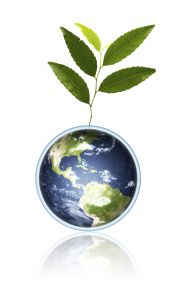The European Commission today presented an analysis of the costs, benefits and options for moving beyond the EU's greenhouse gas reduction target for 2020 from 20% below 1990 levels to 30% once the conditions are met.
 |
The European Commission today presented an analysis of the costs, benefits and options for moving beyond the EU's greenhouse gas reduction target for 2020 from 20% below 1990 levels to 30% once the conditions are met. At present these conditions have not been met. This communication follows the Commission's Communication on "How to reinvigorate international climate negotiations" and the Council's request to present an assessment on the impacts of a conditional move to a 30% emissions cut. The measures taken to support energy-intensive industries against the risk of carbon leakage are also examined as required under the ETS (Emissions Trading System) Directive. The Communication shows that the reduction in EU emissions as a consequence of the economic crisis, together with a drop in carbon prices, has changed the estimations two years ago when the revised ETS was presented. Therefore in light of the new data, an analysis of the implications of the different levels of ambition as a motor for modernising the EU economy and creating new jobs by promoting innovation in low-carbon technologies is provided. This analysis encompasses the efforts required in the main different sectors to reduce greenhouse gas emissions beyond 20%, up to 30%, looking also at the impacts of these efforts and the potential policy options to achieve them. The current context of constrained public finances and economic contraction is also fully taken into account when assessing possible alternatives.
Connie Hedegaard, European Commissioner for Climate Action, said: "Whether to increase our reduction target for 2020 from 20% to 30% is a political decision for the EU leaders to take when the timing and the conditions are right. Obviously the immediate political priority is to handle the crisis. But as we exit the crisis, the Commission has now provided input for a fact-based discussion. The decision is not for now, but I hope that our analysis will inspire the debate in the Member States on the way forward."
Cost of meeting targets
Since 2008 the absolute costs of meeting the 20% target have decreased from €70 billion to €48 billion (0.32% of GDP) per year by 2020. This is due to several factors: lower economic growth has reduced emissions; higher energy prices have spurred energy efficiency and reduced energy demand; and the carbon price has fell below the level projected in 2008 as EU ETS allowances not used in the recession are carried forward. However, at the same time, this reduction in absolute costs comes in the context of a crisis which has left businesses with much less capacity to find the investment needed to modernise in the short run.
Since 20071 the EU is committed to move to a 30% emissions cut by 2020 if other major economies take on their fair share of the effort under a global climate change agreement. The cost of reaching the 30% target is now estimated at €81 billion per year by 2020, €11 billion higher that the price tag for the 20% target two years ago. The 30% target would cost €33 billion (0.2% of GDP) more than the 20% target is estimated to cost today.
Low-carbon growth
Countries worldwide are recognising the potential of green, low-carbon growth to create new sustainable jobs and strengthen energy security. Europe's lead in this revolution cannot be taken for granted as global competition becomes fiercer. The 20% target was seen as a critical driver for modernising the EU economy, but now, with carbon prices lower than expected, its potential as an incentive for change and innovation has decreased. Moreover Europe has also to prepare its long term objectives, as part of the developed countries group, of achieving 80-95% reduction by 2050 at an optimal cost
Options for moving to 30%
The Communication sets out options for meeting the 30% target within the EU ETS and in the other sectors. These include: reducing the number of auctioned allowances under the EU ETS; regulation to promote greater energy efficiency; smart use of fiscal instruments; directing EU cohesion policy funding towards green investments; and improving the environmental integrity of the international carbon credits recognised in the EU ETS.
A measure that is attractive even ahead of a possible move to 30% would be to use some unallocated free EU ETS industry allowances to accelerate innovation in low-carbon technologies, in a similar way to the existing demonstration programme for innovative renewable energy and carbon capture and storage technologies funded with 300 million allowances.
Carbon leakage
The Commission has examined the situation of energy-intensive industries with regard to the risk of "carbon leakage" (relocation of production from the EU to countries with laxer carbon constraints).
The key conclusion is that the existing measures to prevent carbon leakage from these industries - free allowances and access to international credits - remain justified. The analysis also shows that raising the target to 30% while other countries implement their reduction pledges under the Copenhagen Accord would have a limited impact in terms of carbon leakage, provided the existing measures stay in place.
The Commission will continue closely to monitor the risk of carbon leakage, particularly in relation to third countries which have not yet taken action to limit emissions. Among the potential measures that merit continued examination is the inclusion of imports in the EU ETS.